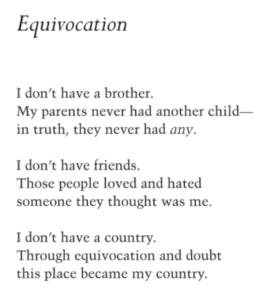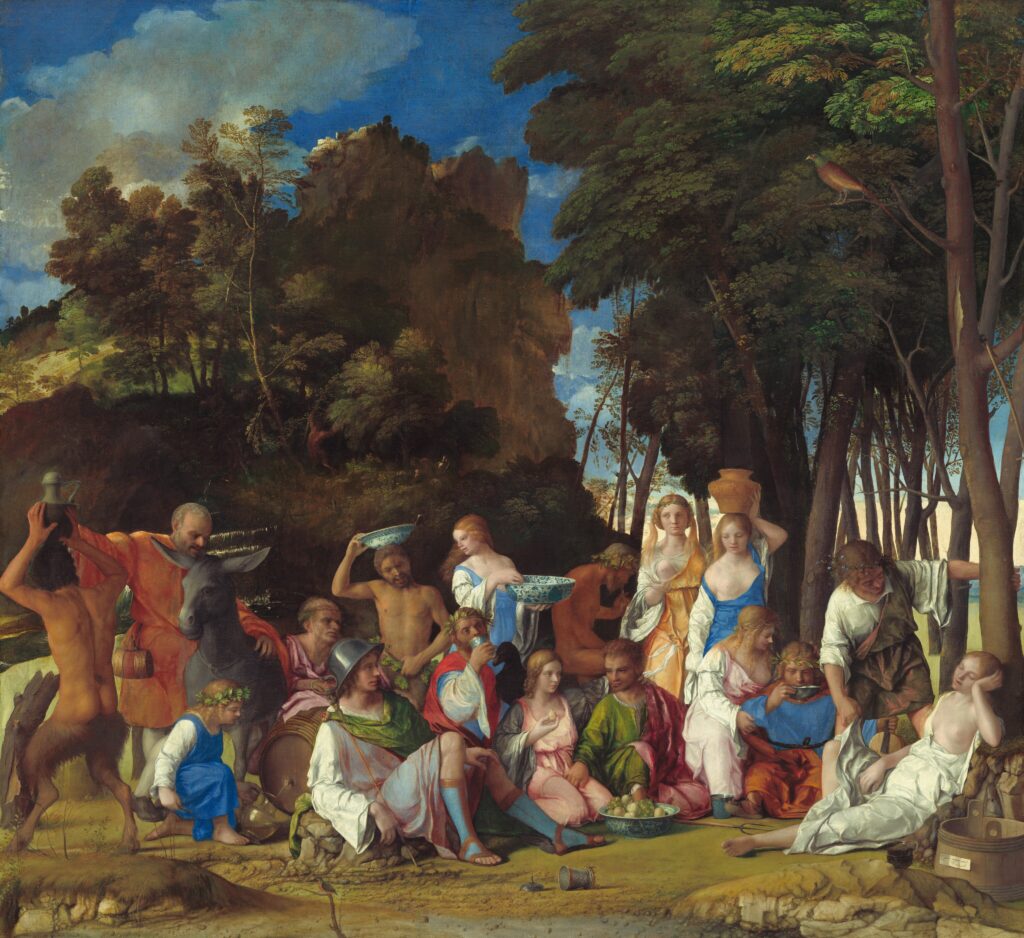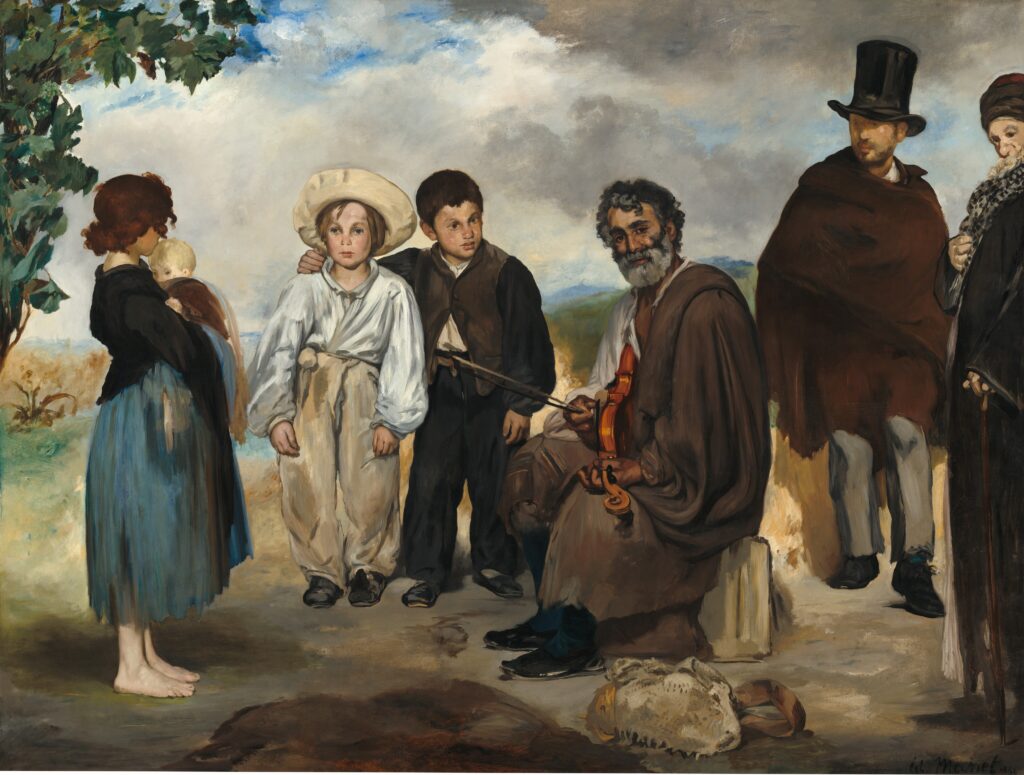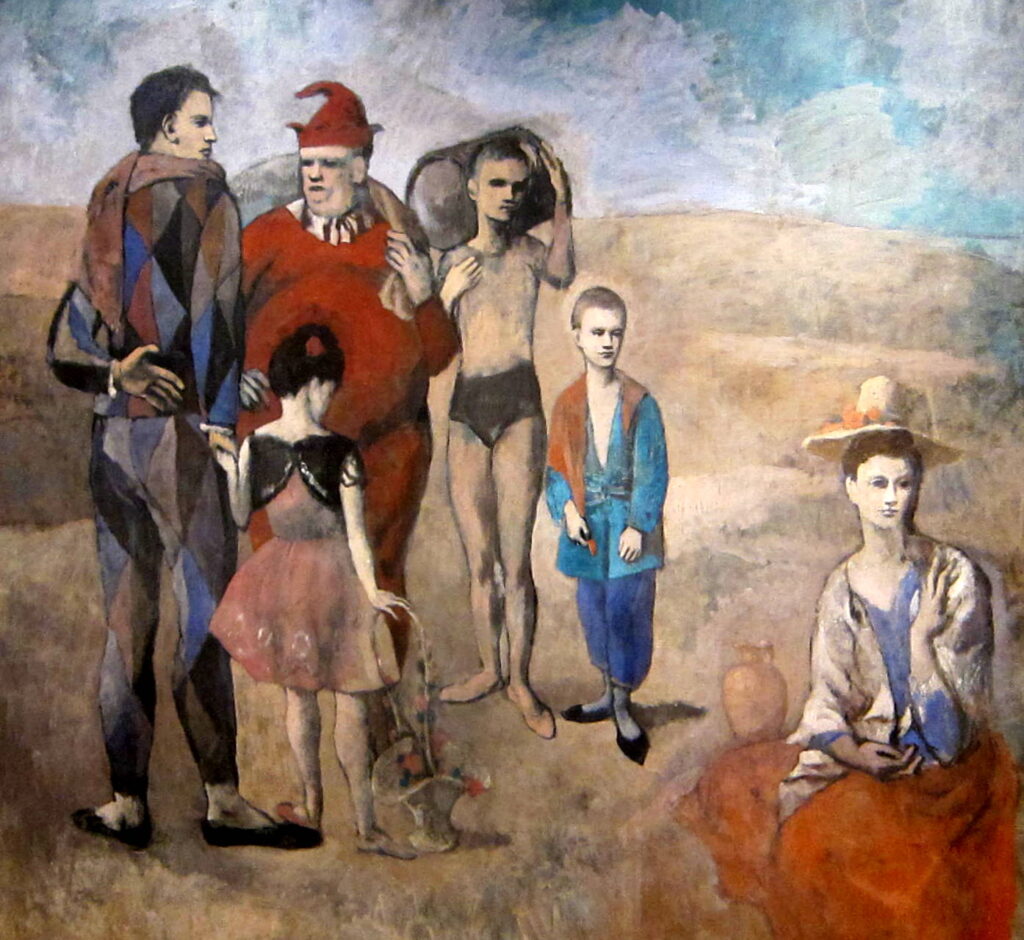The Patriarch spent almost all his time alone in his study. Everyone assumed he was in there meditating or reading, but usually he was worrying. The finances of the House were fragile; loans barely covered monthly expenses. Although he was the only one who understood the financial situation, everyone seemed tense and unhappy. The Patriarch often saw people whispering and scowling and scurrying away.
Years earlier, the Patriarch had experienced insights that had brought him peace. He still considered himself a person of wisdom, but its actual meaning was now dim.
“I wish I could retire!” he said aloud. “I wish I could give my red robe to someone else. Then I could return to my inner life, before it’s too late. But who would succeed me? Who has enough skill and integrity to keep our House intact? Would my successor even protect me physically? I wouldn’t it put past some of these people to stab me in the back–quite literally!–if I renounced my robe.” And he pulled it tighter around his skinny frame, as if for protection.
The next day, as he received the usual line of tattered pilgrims, the Patriarch mentally tallied the likely expenses of alms for the poor visitors versus any possible revenue from those who might donate, and his mood sank below even its usual level.
One of the supplicants looked particularly poor, a youth in rags who might also be a foreigner. “And what do you want, boy?”
“Sir, I am only an ignorant street beggar, but I heard a man recite a poem that spoke to me as if I had known it already. He said that it comes from a book that brings unlimited merit. I have traveled all the way here in the hopes of being taught to read this work and other classics.”
The Patriarch’s interest was piqued. “Which verse did you hear?” he asked. The boy replied:
A flash in the night sky, a breeze, All other things are just like these.
The Patriarch thought: “It is very clever to quote this particular couplet to me. He’s hoping to be admitted to our House. Maybe he simply wants daily rations and a warm place to sleep. Or maybe he has been trained and coached by someone who hopes to profit from his advancement. Still, he has talent–or at least someone does–and talent is scarce around here. I will test his obedience and see if I can make use of him.”
The Patriarch assigned the boy to work in the kitchen and asked the head cook to report regularly on his attitude.
A few days later, after much anguished dithering, the Patriarch decided to move ahead with a succession plan despite his own grave reservations. At the daily House meeting, he announced it:
“It is time for your venerable Patriarch to retire so that he can better serve you through private mental exertions. Someone else may gain merit from holding this burdensome office. All of you, go to your cells and write verses that demonstrate your understanding of our essential teachings. The author of the best poem will take the red robe.”
All the brothers except one thought to themselves: “There is no point. S. will write the best poem, or at least, the Patriarch will prefer it to anyone else’s. S. is obviously his favorite. Let S. write something and become our new leader. Maybe he will prove more competent than the boss we have today, and our living conditions will improve at last.”
As for S., he paced back and forth in his cell, thinking, “I must write a poem, but it probably won’t be any good. The truth always seems to elude my words. Maybe my motivations are wrong: I am striving to succeed when I should cease to strive altogether. But then I would write nothing, and the Patriarch would be disappointed. Besides, someone else would take over, and who could possibly do a decent job? I will do my best and post some anonymous lines on the wall. If the Patriarch approves them, I will acknowledge that I wrote them. If not, life will go on as before.”
He spent the night hours scribbling and erasing, sometimes giving up for a while and even wailing, “I’m finished! I’m finished!” At last, near dawn, S. tiptoed into the long main corridor and wrote these words on the wall in the most generic handwriting he could manage:
The body is a holy tree; the mind is a mirror. Polish it constantly; make it ever clearer.
He scurried away, feeling ashamed, and lay awake until the morning meal.
When the Patriarch went for his rounds, he saw the poem and recognized S.’s hand immediately. The results did not surprise him: two conventional similes. He made a show of enthusiasm, saying: “Everyone, gather around and read these lines. They will do you good.” Then he went back to his study and put his face in his hands and tried to steady his turbulent thoughts.
S. knocked on the door and the Patriarch admitted him. “I presume you wrote the couplet on the corridor wall?”
“I admit it, sir. Is it any good at all? I meant to express the value of continual polishing, not to imply that the mirror can ever be clean.”
“Perhaps it is good enough,” said the Patriarch, privately acknowledging that he could have done no better. At least his plan was unfolding as he had expected. Soon S. would shoulder the burdens of office. The Patriarch did not think that S. would allow anyone to harm him in his retirement–assuming that the House remained in business at all.
At just this moment, in the kitchen, the beggar boy (who was grinding grain as always) overheard a more senior cook recite S.’s new poem. He asked where it came from and heard the story of the competition to become the new Patriarch.
“May I see the verse as it’s written on the wall?” he asked. “I cannot read a word, but I would like to pay my respects.”
The cook thought that this foreign boy was a good kid, quiet and hard-working. He always accepted teasing in a positive spirit. He showed the lad the poem.
Standing before it, the boy said, “Do you think you could write something for me? I promise I will do your chores as well as my own for a whole week.” And with his guidance, the cook wrote these words on the wall:
What's holy is no solid tree; mind is always clear. What kind of substance could ever leave a smear?
The boy thought to himself, “The Patriarch will sort of appreciate this. Whatever he may privately experience, he at least understands the logic of his own teachings, and this verse expresses the conclusion more precisely than that ignorant poem by some old monk. But maybe I can do better.”
He asked the cook to write just one more couplet below the previous one.
A mirror with no surface or back: What could that suffer or lack?
The boy thought: “This is the best answer, I think. At any rate, a paradox is always the most intriguing kind of thought, and someone might actually benefit from pondering this one. I have many ideas for running this House, and surely my skills will now be recognized. I cannot believe how many times these brothers have listened to lectures and readings without learning how to write. Honestly, it’s not that hard to come up with an enigma.”
On his evening rounds, the Patriarch encountered a knot of brothers gathered around the three verses, arguing about their meaning and which one was best. He could tell from the way they treated the beggar boy that he added some of the lines. The Patriarch’s first impression was confirmed; this youth understood the moves that one ought to make. But the Patriarch was not sure what to do as a result.
“All of these are useful,” he said, “but none is truly satisfactory.” And he walked back to his study, cultivating a mysterious air.
This time, it was the youth who knocked on his study door and acknowledged having written the verses.
“You can have my robe,” said the Patriarch. “I certainly don’t want it, and it seems that you do. We can say that I transmitted my teachings to you tonight, although I think you already get the point.
“The question is whether you really want this job. I have not disclosed our financial situation, but you may not want to inherit it. And you must realize what a fractious, quarrelsome group we have here. Frankly, if I were you, I would accept the robe as a sign of authority and go as far from here as you can. Use my gift to justify founding a whole new house. But travel quickly and watch your back; I wouldn’t be surprised if some of our friends try to track you down and even kill you for the Patriarch’s mantle.”
“And what of you?” asked the youth. “How will you manage if this House has no leader?” He watched the old man with sudden sympathy.
“Ah” said the Patriarch,
A flash in the night sky, a breeze, All other things are just like these.






